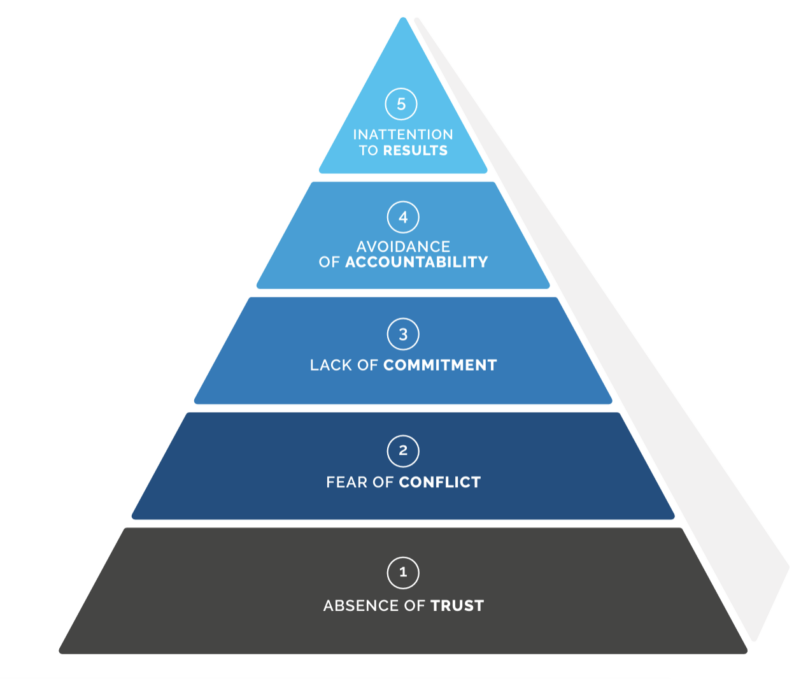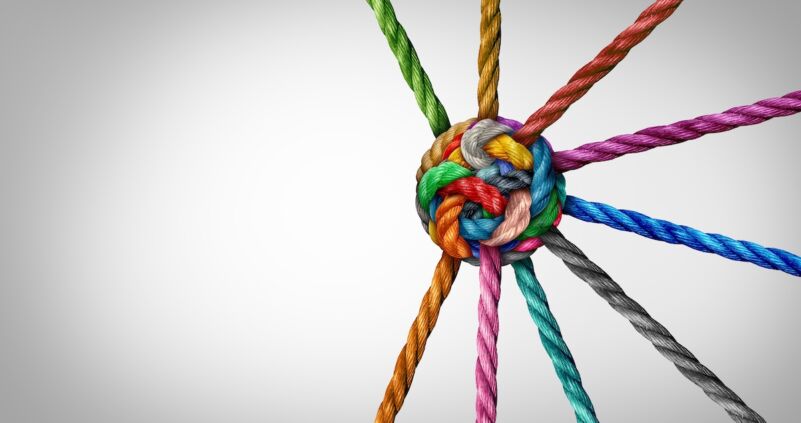‘You have no authority here, Jackie Weaver, no authority at all!’ Remember these immortal words? They were uttered in the now infamous parish council meeting of the village of Handforth back in 2021. If ever there was an example of a dysfunctional team, this was it.
There’s a continuum when it comes to team cohesion. Parish Councils are definitely at one end. They’re often a group of individuals with different motivations. Everyone has their agenda, and there’s a strong sense of self-aggrandisement. They see themselves as a committee rather than a team that works together.
Conversely, you have highly successful sports teams that are so cohesive they would die for each other. We’ve seen perfect examples of that in the recent Rugby World Cup. The South Africa/Ireland game particularly. You could see each player’s commitment to the other and the many hours of dedicated practice paying off. Pure magic.
So, what makes a cohesive team? And how do you improve team dynamics?
Clarify team goals and each person’s role.
A cohesive team unites around a common goal. This is vital. How many times have I talked about the importance of purpose to motivation? Sharing this with the rest of your team can make a massive difference in how they work together.
OKRs are our tool of choice. They can be directly linked to company purpose. I like it when there’s transparency around performance against these goals. Too often, that’s what people miss. They give each team member their goals, which are only known by the individual and their manager. Instead of this, ensure everyone’s in the loop, and there’s a collective measurement of progress, ideally daily but at the very least weekly. This is how you build momentum.
Camaraderie is a hallmark of a cohesive team. You’re much more likely to achieve this if teams set their own goals rather than having them imposed by a manager. And there’ll be more ownership, too, by a factor of four or five.
And make sure every team member knows what is expected of them. Structure and clarity are vital to improving team dynamics.
Prioritise psychological safety and build trust.
Create the right environment for a cohesive team. Businesses that create psychological safety for their people will always pull ahead. Why? Because people need to feel safe before they put their heads above the parapet and disagree. If you don’t have this safety, the opposite is groupthink. Creativity and individuality become stifled as team members strive to avoid conflict.
Trust should be vulnerability-based. A model we use is the three Cs – ‘Competency, Care and Character’. Competency because each team member respects the others’ skills and expertise. There’s an expectation that people will do what they’ve committed to. Care because there’s a sense of radical candour from wanting everyone to be their best. And Character born of respect for the strengths of other team members. People are very different. They may not be on each other’s Christmas card list, but the mutual respect is still evident.
Remember, we judge ourselves by our intent and others by their actions. But if there’s respect, you’re more likely to see those actions through rose-tinted spectacles. We use Kolbe, Working Genius and Gallup Strengths in our coaching practice to give people a lens for this. Understanding differences in a team leads to better knowledge of what drives others.
Foster open communication
Open communication will strengthen team relationships. We suggest introducing a regular communication rhythm to our clients. This starts with Daily Huddles.
The other day, I discussed this essential element with an Executive team. They’d resisted my advice for 18 months, but every time we met, I would say, ‘Daily huddles?‘ Like a stuck record! Finally, on their most recent visit, they said, ‘Actually, a daily huddle would be helpful.’ Hallelujah – finally, the message was landing. Why? Because there had just been a blatant miscommunication in their team that had caused bad feelings.
Someone had Slacked someone else a message at the end of a busy day saying, ‘I’m thinking of doing this – is this OK?’ The other person, who was knee-deep in other issues, said yes. Then, a few days later, the instigator tried to pin the decision on them. It exploded into an argument. I can see how easily these things happen. This communication would have been far better as a 30-second conversation in the context of a Daily Huddle. That’s when a team should make decisions together, looking at what went well yesterday, where people are stuck and their intentions for the day ahead. It should take no longer than 15 minutes but will save you hours in rambling email exchanges.
Offer encouragement and recognition
Recognise that laughter is a sync-up activity which will develop team cohesion. Don’t take yourself too seriously; encourage the same in your teams. I can’t emphasise enough how being deliberate about celebrations and praise can transform team performance. Make it regular and habitual – even if it doesn’t come easily – and encourage the same in all your managers. If a team hits a milestone, make sure you celebrate. You can even make a ritual of failure, ensuring people see these moments as an opportunity to learn and grow.
Gallup has emphasised the importance of giving praise in every 1:1 interaction between individuals and their managers. And this is how you dole out social currency for the behaviours you want to see in everyone and reinforce core values in a team.
Resolve any conflicts constructively

Cohesive teams are superb at constructively resolving conflicts. It’s helpful to look at Lencioni’s triangle model for the ‘Five Dysfunctions of a Team. Trust is the foundation from which team cohesion is built; without it, there can be no conflict resolution. In this situation, teams show fake harmony – so people agree to do stuff and then don’t, or they sidestep around issues, so everything takes longer. Instead of leaning in, they’re leaning out.
Work at how you deal with conflict by practising being radically candid with each other. This is particularly relevant when giving and receiving feedback. When conversations are difficult, make sure you’re clear that you’re providing feedback to help that person be the best version of themselves. As a team, you owe this to each other. And work on a solution together.
Written by business coach and leadership coaching expert Dominic Monkhouse. Contact him to schedule a call here. You can order your free copy of his book, Mind Your F**king Business here.

